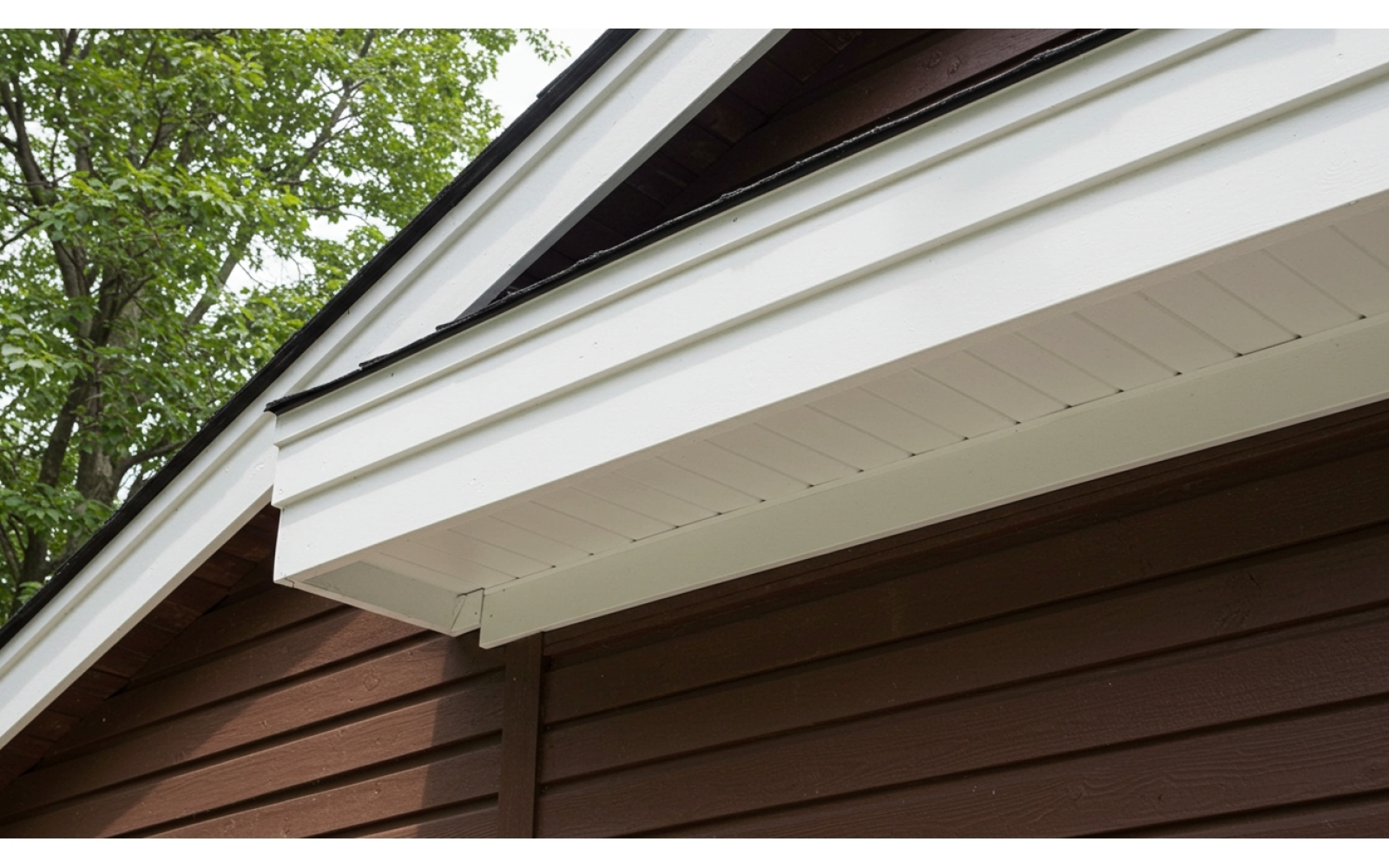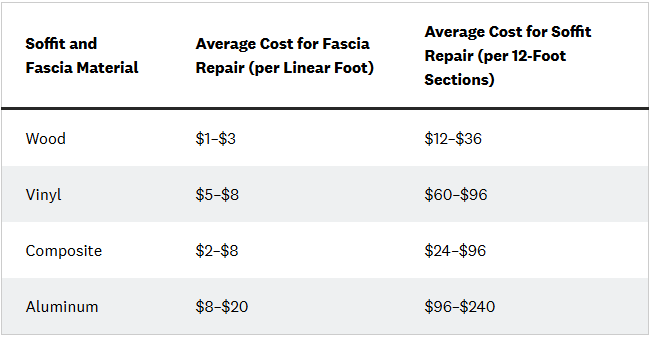Soffit and Fascia: Understanding Their Role in Your Roof and Home

When you look at a house, your eyes usually catch the big things—the siding, the windows, the roof itself. But have you ever noticed the edges of the roof, the parts that seem to frame it perfectly and give it a polished look? They’re not just there for decoration, though they do add to a home’s curb appeal.
For many homeowners, these subtle features often go unnoticed… until something goes wrong. Maybe water starts seeping in during a heavy rain, or pests find a way to sneak into your attic. Suddenly, what seemed like a minor detail becomes a serious problem.
It turns out, those trim-like pieces along your roof aren’t just for looks. They play a crucial role in keeping your home safe, comfortable, and lasting for years. But what exactly are they, and why should you care? That’s what we’ll explore in this guide, step by step.
What Are Soffit and Fascia?
If you’ve ever peeked up at the edge of your roof, you might have noticed the underside that stretches out beyond the walls and the flat board that runs along the roofline. These aren’t just random pieces of wood or vinyl—they have names, and each serves a purpose.
The soffit is the part tucked underneath the roof’s overhang. Think of it as the underside of a small ceiling that extends past your walls. It’s often vented, allowing air to flow into your attic, which helps regulate temperature and prevents moisture buildup. Without it, your roof and attic could be vulnerable to damage over time.
The fascia, on the other hand, is the vertical board that sits right at the edge of your roof. It’s where your gutters usually attach, and it gives the roofline a clean, finished appearance. Beyond aesthetics, fascia protects your home from water damage by keeping rain from seeping behind the gutters and into your walls.
Together, soffit and fascia may seem like minor details, but they’re essential parts of your roof system—working quietly to keep your home safe, dry, and looking its best.
Why Soffit and Fascia Are Important
You might be wondering—are these just decorative elements, or do they actually matter? The truth is, soffit and fascia do a lot more than make your roof look neat. They play a key role in protecting your home and maintaining its overall health.
First, they act as a barrier against water. Rain and snow can cause serious damage if they seep behind your roofline, leading to rotting wood, mold, or even structural issues. The fascia helps keep gutters in place, channeling water safely away from your home, while the soffit allows proper airflow to prevent moisture buildup in the attic.
Second, they help keep pests out. Birds, squirrels, and insects love dark, hidden spaces. Without a proper soffit, your attic could become an easy entry point for unwanted guests.
Finally, they improve your home’s appearance and energy efficiency. A well-maintained fascia and soffit can give your roof a polished look while supporting ventilation that helps regulate attic temperature—potentially saving on cooling costs during hot months.
Common Materials Used
When it comes to soffit and fascia, the materials you choose can make a big difference in both appearance and durability. Here are the most common options homeowners use:
- Wood – Traditional and visually appealing, wood gives a classic look to your roofline. However, it requires regular maintenance like painting or sealing to prevent rot, warping, and insect damage.
- Vinyl – Lightweight and low maintenance, vinyl is resistant to rot and pests. It’s affordable and easy to install, but it may not be as durable in extreme weather conditions.
- Aluminum – Strong, lightweight, and rust-resistant, aluminum lasts longer than wood and vinyl. It’s ideal for gutters and fascia boards but can dent more easily if hit.
- Composite or Fiber Cement – Made to mimic the look of wood while offering higher durability and lower maintenance, these materials are resistant to rot, pests, and harsh weather.
Types of Soffit and Fascia
Soffit and fascia come in different types, each designed for specific needs and aesthetics. Understanding these options can help you choose what works best for your home.
Soffit Types:
- Vented Soffit – Features small holes or slats that allow air to flow into the attic. This ventilation helps prevent moisture buildup and keeps the roof cooler.
- Non-Vented Soffit – Solid panels with no ventilation. These are often used in areas where attic ventilation is provided elsewhere or isn’t necessary.
- Material Variations – Soffits can be made from wood, vinyl, or aluminum, each offering a different look and maintenance requirement.
Fascia Types:
- Wood Fascia Boards – Traditional and elegant, often paired with wood soffits. Requires regular maintenance to prevent rot and decay.
- Aluminum Fascia – Durable and rust-resistant, often used with aluminum soffits. Lightweight and low maintenance.
- PVC or Vinyl Fascia – Low maintenance and resistant to water damage, a popular choice for modern homes.
Read more about the materials and types used at Windsor One.
Maintenance and Care Tips
Keeping your soffit and fascia in good condition doesn’t have to be complicated, but regular care can prevent costly repairs in the future. Start with regular inspections at least twice a year, looking for signs of rot, rust, insect damage, or any sagging and warping. Cleaning is also essential—remove leaves, dirt, and debris buildup.
Vinyl or aluminum panels can be washed with soapy water, while wood may require gentle scrubbing and occasional repainting to maintain its protection. Small issues like cracks, peeling paint, or minor damage should be addressed promptly before they worsen, as delaying repairs can lead to water infiltration or pest infestations.
Don’t forget to check the gutters attached to the fascia, ensuring they are free of clogs and securely fastened, since proper gutter maintenance protects the fascia from water damage.
For wooden soffits and fascia, repainting or resealing periodically helps maintain both appearance and durability, keeping your roofline looking polished and extending the life of your home’s exterior.
Signs You Need Repair or Replacement
Knowing when your soffit and fascia need attention can save you from more serious damage to your home. Common signs include sagging panels, rotting wood, or warped materials, which often indicate water damage or prolonged exposure to the elements. Peeling paint or rust spots are also warning signals, especially on wooden or metal components. If you notice missing or damaged gutters, the fascia may be under additional stress, increasing the risk of deterioration. Pest infestations, such as birds, squirrels, or insects finding their way into your attic, can also point to gaps or weaknesses in the soffit. Addressing these issues promptly not only preserves the appearance of your roofline but also protects your home’s structure and prevents costly repairs in the future.
Cost Considerations
Replacing soffit and fascia can vary widely in cost, depending on your home’s design, the materials used, and whether professional installation is required. According to Angi, the total cost for a full soffit and fascia replacement generally ranges from $2,300 to $6,000, though in some cases it can be as low as $600 or exceed $6,000. Material costs alone range from about $1–$5 per linear foot for wood or vinyl and $3–$20 per linear foot for aluminum. Labor is a significant factor, as professional installation ensures the job is done correctly, especially for vented soffits or complex rooflines. Choosing the right materials and installation method can help protect your home while balancing upfront costs and long-term maintenance.
Photo credit: Angi
For more detailed information regarding soffit and fascia costs, you can visit Angi’s blog about the costs.




